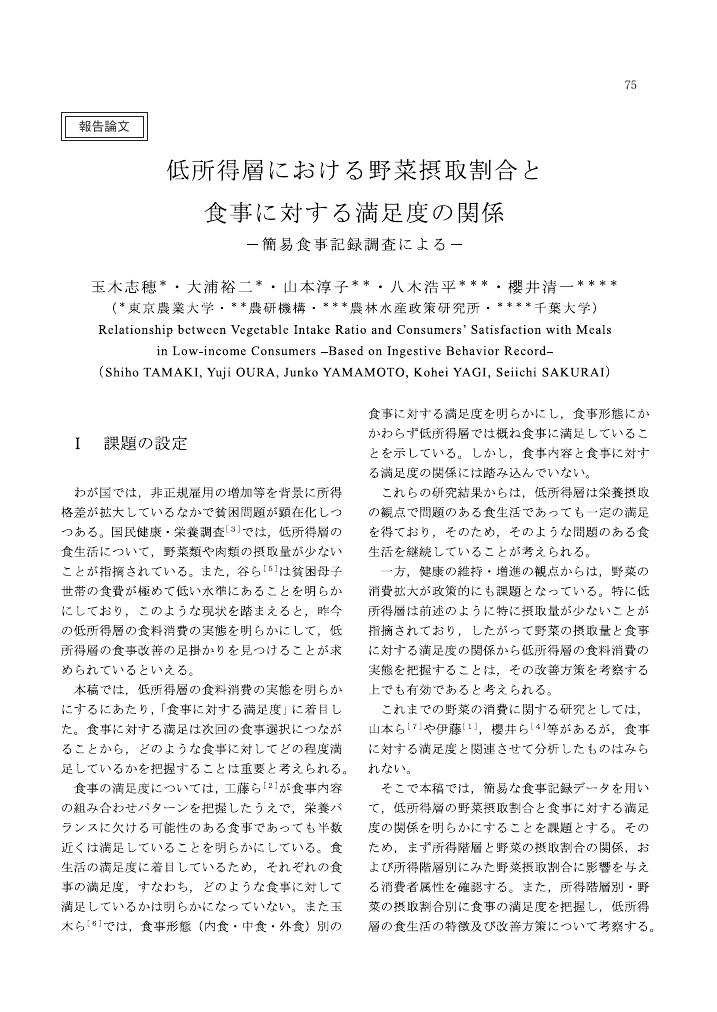2 0 0 0 OA 低所得層における野菜摂取割合と食事に対する満足度の関係 簡易食事記録調査による
1 0 0 0 OA 訪日外国人における旅行満足と再来日の意向の規定要因
- 著者
- 八木 浩平 菊島 良介
- 出版者
- 日本農業経済学会
- 雑誌
- 農業経済研究 (ISSN:03873234)
- 巻号頁・発行日
- vol.91, no.2, pp.257-262, 2019-09-25 (Released:2019-12-25)
- 参考文献数
- 11
This study aims to reveal the determinants of Chinese and Korean tourists' satisfaction and intention to revisit Japan. To study these issues, we assumed that the performance evaluations for destination attributes, such as "Eat Japanese food" and "Shopping," determine tourist satisfaction and intention to revisit. The main results are as follows : First, favorable performance evaluations for "Eat Japanese food" and "Shopping" have statistically significant positive effects for overall satisfaction and intention to revisit. Second, young tourists tend to get higher tourist satisfaction than old tourists, so that we show the efficacy of promotion for young tourists.
1 0 0 0 OA 我が国における大豆粕フードシステムの構造遷移
- 著者
- 八木 浩平
- 出版者
- 日本フードシステム学会
- 雑誌
- フードシステム研究 (ISSN:13410296)
- 巻号頁・発行日
- vol.22, no.2, pp.70-81, 2015 (Released:2015-12-08)
- 参考文献数
- 27
In Japan, after the further promotion of trade liberalization, there is the possibility to increase the import of intermediate-goods such as vegetable oil and flour milling. The question we ask here is how will the change of grain market condition, e.g. trade liberalization as mentioned above, affect the structure of future grain food system in Japan. To answer this question, we focus on the soybean meal, of which import has increased, and examine how the trends of recent international grain market change the vertical relationship and firm's behavior of soybean meal food system. In this paper, we attempt 1)to grasp the overall structure of soybean meal food system by using the analytical framework proposed by Niiyama[7]; and 2)to examine the structural transition of soybean meal food system. By doing these, this paper aimed to suggest the implication for future grain procurement regime in Japan.The results showed that Japanese soybean meal food system mainly consists of general trading companies, vegetable oil manufactures and animal feed manufactures. In the system, however, the power of vegetable oil manufactures is shrinking because of the current increase of soybean meal import. With the concern of the threat of intermediate-goods import increase, each economic agent seeks the alternative to domestic production of intermediate-goods, such as the overseas expansion of general trading companies and vegetable oil manufacturers.
